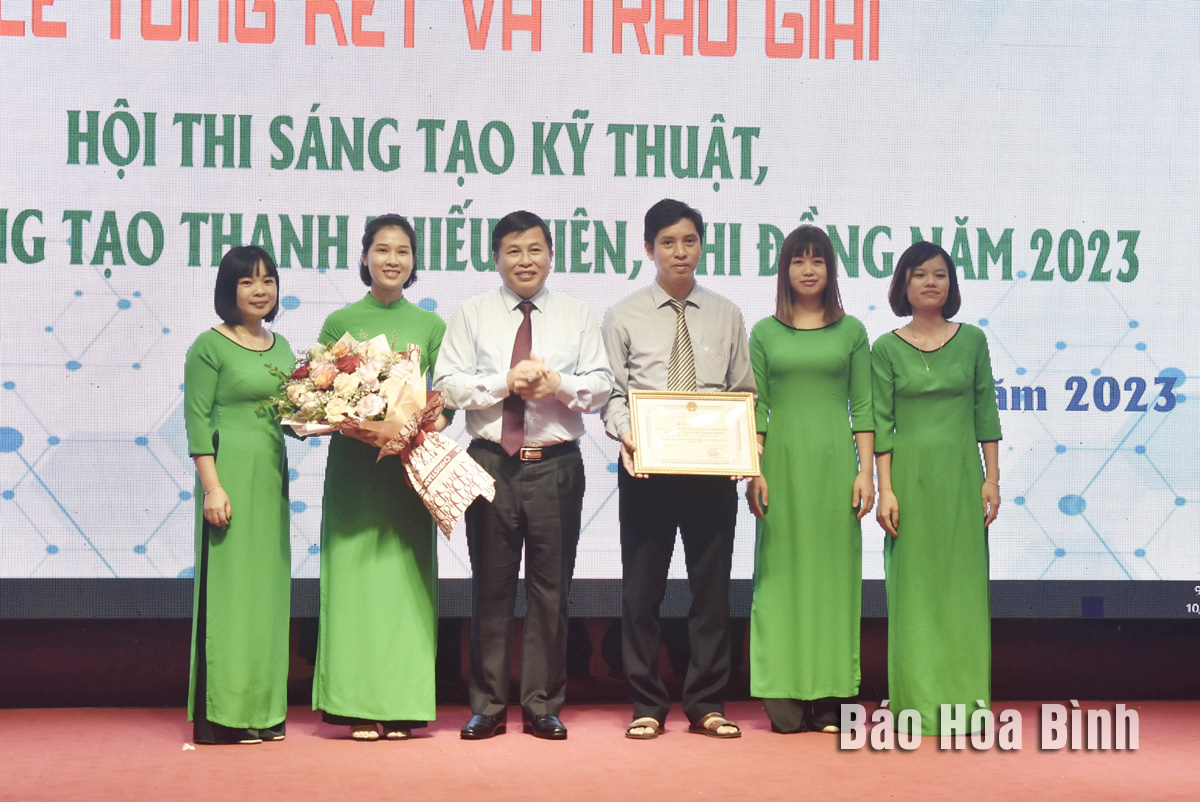
(HBO) – A total of 49 projects were honoured at the awarding ceremony for the 9th Technical Innovation Contest and the 19th Innovation Contest for Youth and Children of Hoa Binh province on October 12.
After two years of launching, the 9th provincial
Technical Innovation Contest received 33 entries, up 12 entries compared to the
previous event, including many solutions with improved quality developed by
local farmers and workers. Meanwhile, the 19th provincial Innovation Contest
for Youth and Children received 129 entries from 10 localities.
One first, two second, seven third, and 20
consolation prizes were presented to the outstanding initiatives of the contest
for youth and children. Meanwhile, one first, two second, two third and five
consolation prizes were handed over to the winners of the technical innovation
contest.
On the occasion, a group of authors from the
provincial centre for science and information technology application was
presented with a certificate of merit from the Chairman of the provincial
People’s Committee.
Addressing the event, Vice Chairman of the
provincial People’s Committee Dinh Cong Su, who is also Chairman of the
provincial Council for Science and Technology, affirmed that the biennial
technical innovation contestaims to promote the innovation emulation
movement, exploit the great innovation potential among local residents, and
constantly promote initiatives and technical improvements, towards
strengthening the application of scientific and technological advances in
production and social life, contributing to implementing socio-economic
development, industrialisation and modernisation goals of the province.
The annual innovation contest for youth and
children has contributed to awakening potential and promoting innovation among
teenagers and children, he added, urging relevant departments, sectors, and
localities to actively apply solutions that won the contests.
At the event, the organising board launched the
10th Technical Innovation Contestin 2024 - 2025 and the 20th Innovation
Contest for Youth and Children in the 2023 – 2024 academic year.
Hoa Binh province is undergoing a dynamic transformation amid Vietnam’s national digital transition. Building on Poliburo’s Resolution No. 57-NQ/TW on breakthroughs in science, technology, innovation, and national digital transformation, the province has rolled out a wide range of practical action plans. A standout initiative is the "Digital Literacy for All” movement, an effort to ensure that no one is left behind in the digital era.
Hoa Binh province is undergoing a dynamic transformation in the wake of the national digital transformation movement. Building on Resolution No. 57-NQ/TW of the Politburo on breakthroughs in science, technology, innovation, and national digital transformation, the province has implemented a wide range of practical action plans. A standout initiative is the "Digital Literacy for All” movement ambitious effort to ensure that no one is left behind in the digital age.
With a spirit of unity and proactive problem-solving, the Party Committee, the government and the people of Dong Lai Commune (Tan Lac District) have made great strides in implementing the resolutions of the 24th Party Congress of the commune for the 2020 - 2025 term. Focusing on leadership and practical actions, the commune has brought the Party’s resolutions into daily life, creating strong impacts and pushing the local development forward.
Amid the nationwide push for digital transformation, young people in Hoa Binh Province are stepping up as dynamic pioneers, applying technology to enhance Youth Union operations and expand the reach of youth-led initiatives. Through creativity and adaptability, Youth Union organizations at all levels have introduced a series of practical solutions, contributing to modern governance and community development.
In recent years, An Nghia commune, located in Lac Son district, has stepped up administrative reform, focusing on improving the quality and efficiency of its single-window service unit for receiving and processing administrative procedures. These improvements have helped create favourable conditions for local residents and organisations to handle administrative procedures, contributing to the commune’s broader socio-economic development.
The Prime Minister-approved master plan to develop the multi-use value of forests ecosystems through 2030, with a vision to 2050, aims to improve the management and sustainable use of forest resources, create jobs, increase incomes, and improve the living standards of ethnic minorities, people in mountainous and remote areas, forest workers and those living near forests.


